
The Ricoh XF-30 is yet another ‘fixed’ focus snapshot camera (more than half a dozen reviewed so far) that I seem to be drawn too for some reason; maybe for the speed and simplicity, or maybe because it was the only type of camera I could afford in my younger days, and it’s simply nostalgia run amok. Either way, it’s a neat camera, and much like the Ricoh YF-20, you can change the focus of the camera by moving a switch by the lens, so it’s not really a ‘fixed’ focus camera. Additionally, and to completely ruin the simplicity part; this camera is not actually all that simple, as it has an electronic shutter with speeds from 1/30s-1/500s according to the manual, and the aperture seems to be tied to the CdS exposure meter, and not necessarily the ISO switch on the camera, (not stated in the manual); for instance, when you put your finger over the CdS meter and press the shutter, the aperture goes wide open even when the ISO switch is set at 1000, so drat, it’s really more of a complicated fully automatic electronic camera, much like this one without the AF.
Anyhow, the Ricoh XF-30 is still a nifty camera, and we’ll start the review off with some technical aspects directly below; but if you’re the impatient type, scroll down to the sample photos and see if the Ricoh XF-30 meets your needs.
Name; Ricoh XF-30. Also known as the Ricoh Myport AMI.
Manufactured by; Ricoh Company LTD, Taiwan, R.O.C.
Date of manufacture; late 1985-1990?
Price; New York City photo store has it listed for $64.95 in June 1989.
Build material; black plastic body with a clear plastic window over the viewfinder, flash signal, CdS cell and film reminder slot.
Weight and size; camera with batteries, 10.2oz (291g). Camera only 8.1 oz (231g).
Dimensions; Size is 4.8″ (122mm) wide, 2.65″ (67mm) high, and 1.8″ (46mm) deep.
Focal length; 35mm.
Aperture; automatic, not adjustable.
Focusing; zone, three to choose from, close, middle, and long distances. Automatically goes to the middle when lens cover is closed.
Original print size; standard oversize prints 4” x 6,” at Walgreens, Kmart, or Walmart etc.
Approximate resolution; will make good 8″x 10″ prints at all settings when focused to appropriate distance. Capable of excellent enlargements when stopped down.
Lens; Ricoh coated glass three element in three groups, 35mm focal length, F/4 maximum aperture.
Shutter and speed; mechanical two bladed shutter. The owner’s manual says the shutter speed is 1/30s-1/500s, but in very low light the shutter will stay open for about 1/4 second if you hold down, and keep the flash from popping up as you take the picture.
Distortion; mild, but complex dinner plate type.
Color fringing; not much noticeable.
Features; three zone focusing, useful flash, semi-auto loading, auto advance and rewind.
DX coding; manually selected at: ISO 100, 200, 400, and 1000.
Film; all 135 film cartridges, B&H, Amazon, eBay.
Double exposure prevention; Yes. There is no way to get a double exposure even if you want one without screwing up the camera.
Flash; guide number of 10m at ISO 100. Fill flash is possible in bright light by holding your finger over the CdS cell to get the flash to pop up, and then taking your snap. Recharges in about 6 seconds with fresh batteries.
Power; two AA batteries. Manual states NiCd not usable.
Viewfinder; reverse galilean type. Magnification 0.53x. Field of view 80%. No guide lines or parallax correction.
Accessories for this model; none that I know of.
Crippling features and omissions; nothing really, it’s for super quick and easy snapshots.
Good features; three zone focusing and fill flash capable.
Product shots with descriptions. Click for larger images.

The Ricoh XF-230 has a sliding plastic door covering the lens (not shown); which also acts as a power lock switch. To the right of the lens is a little round CdS cell for aperture and shutter speed control. The ISO film setting are changed by sliding a lever to the appropriate position. The flash swings out in the vertical position automatically in low light.

The Ricoh lens is a multi-coated three element in three group design with a maximum aperture of F/4. The focusing switch is above the lens and uses symbols that show up in green to indicate focusing range. The close focus symbol on the left is a person, with a zone of about 0.8-1.2m. The circle in a circle is the middle zone, with a range of about 2-3m, and the last symbol is a mountain range, with a range of 4m to infinity. When you close the lens cover, the focus goes back to the middle zone.

The bottom of the camera has an AA battery compartment on the left, an off-center 1/4-20 tripod socket, and a mid-roll rewind button on the right.

On top we have a shutter button, a self timer button, and an additive type easy to see shot counter with black numbers on a yellow background, which resets itself when you open the back.
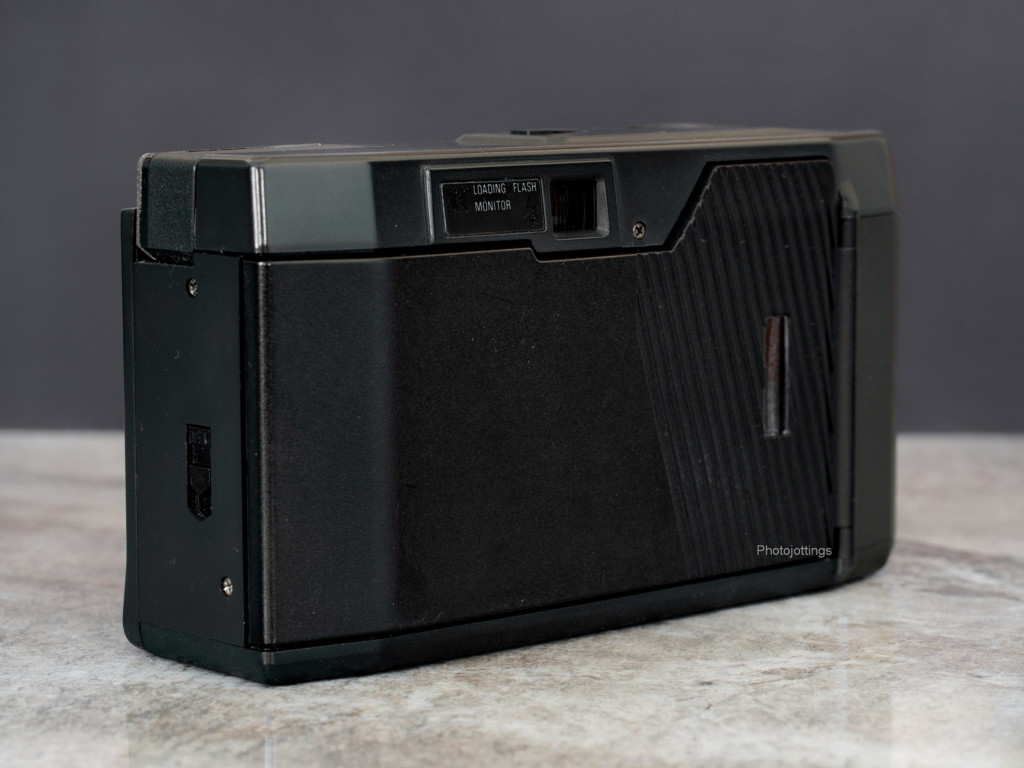
On the back side we have the viewfinder, which is sufficiently bright, with no guide lines, and a red/orange flash ready-light beside it. There is a small double slit window on the opposite side of the flash ready light to see if the film is advancing properly, see picture below. The slot window on the back cover is for letting you know what kind of film is being used.
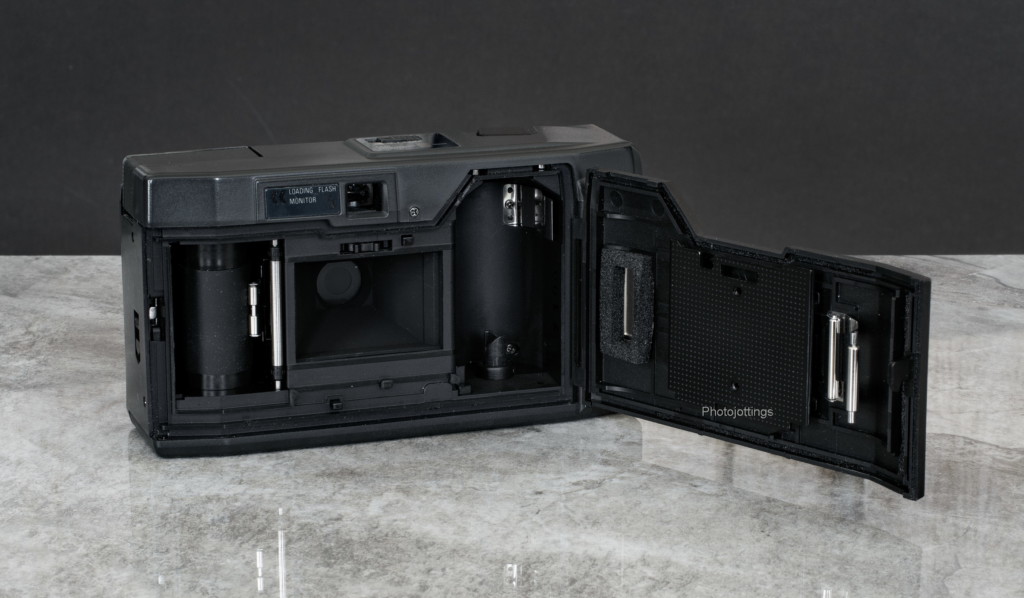
With the back open you can see the camera has some decent features like a real film pressure plate, a spring steel film tensioner and anti reflective black paint inside the light chamber. The only moltoprene (foam) is around the film reminder slot, and a short strip on the upper and lower back cover.
Here are some test images scanned on a Pacific Image Primefilm XA SE. All are 3500 pixels wide; there is no additional resolution from scanning at a higher sample rate. Kodak Ultramax 400 film. Click for larger images.
Note as to why there’s a faint line or two running across the image: these negatives were developed in a roll machine by a local lab, the same as what the one hour photo stores used back in the day. Unfortunately, sometimes they get a nick in the transport system somewhere, and it scratches the negative emulsion.
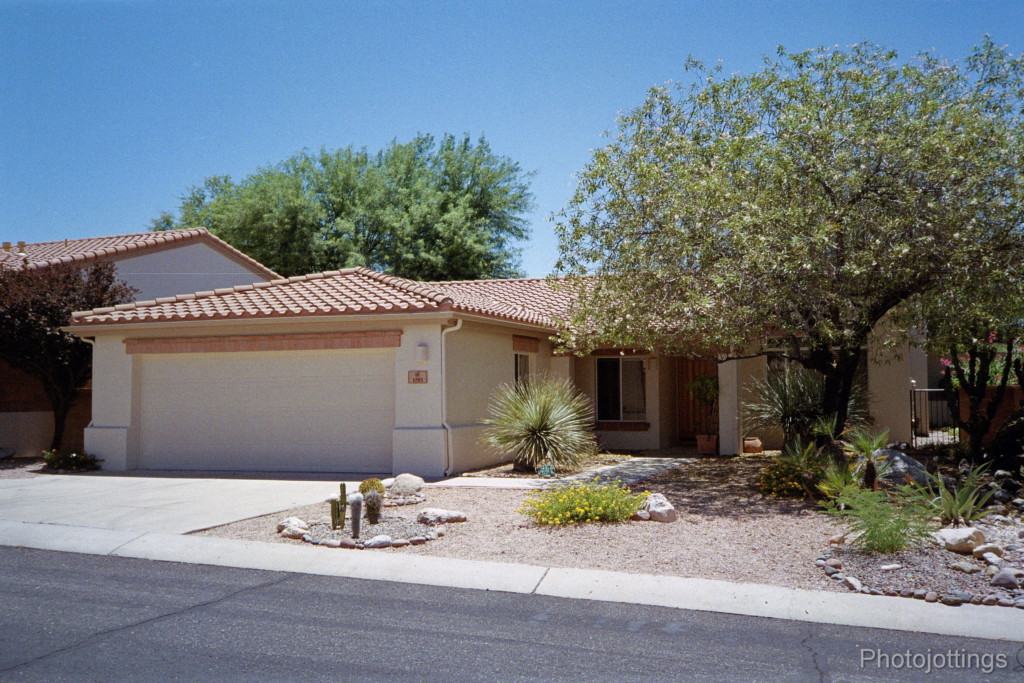
Home sweet home, for someone. Focus distance set to long. Slightly underexposed it seems.
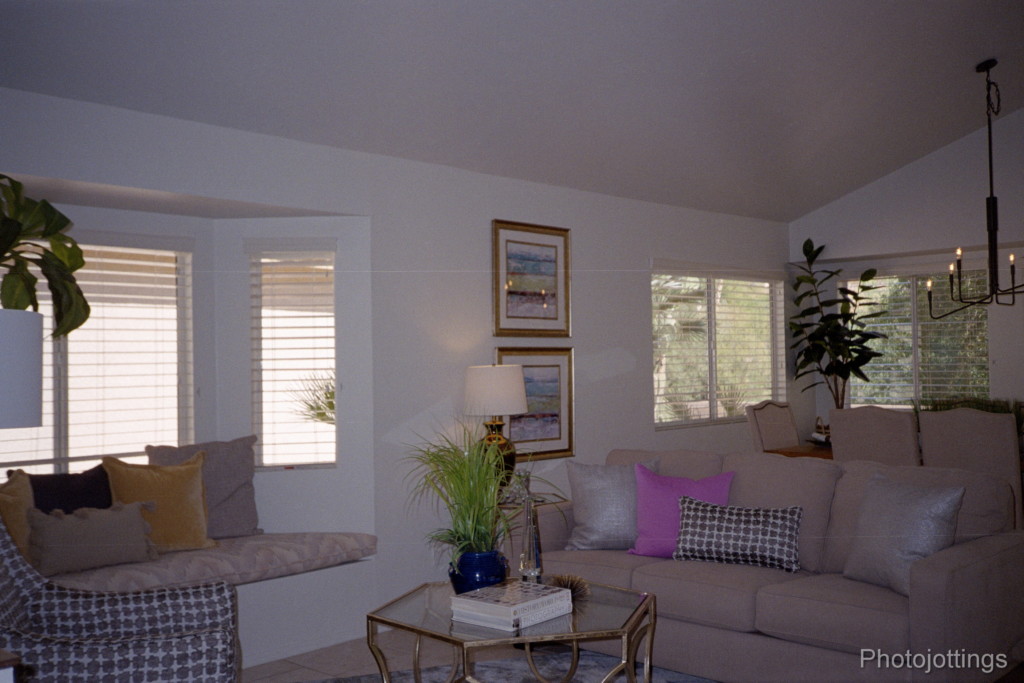
Interior scene with flash, probably the lens is wide open at F/4. Focus distance set to the middle position.
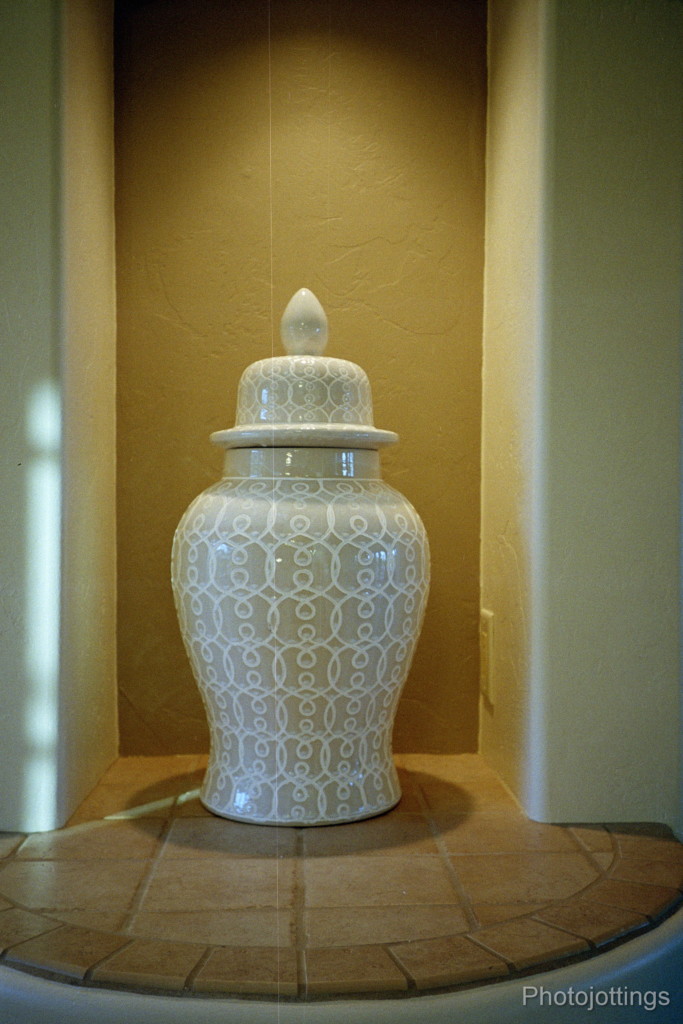
Urn, close focus position.

Doggie clothes. Focus distance set to close. Nice sharp photo here. Red/orange band in center sweater is about 2.5′ (.8m) away.
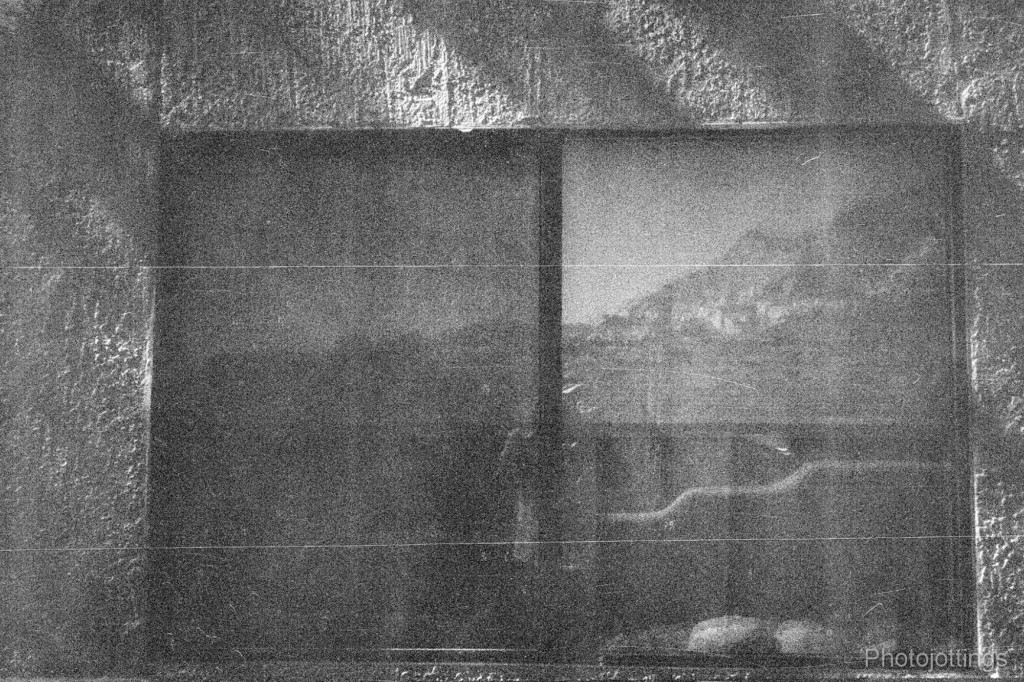
Very underexposed framing test shot. The window frame filled the viewfinder, but it’s off to the lower right, and you can see that in other pictures.
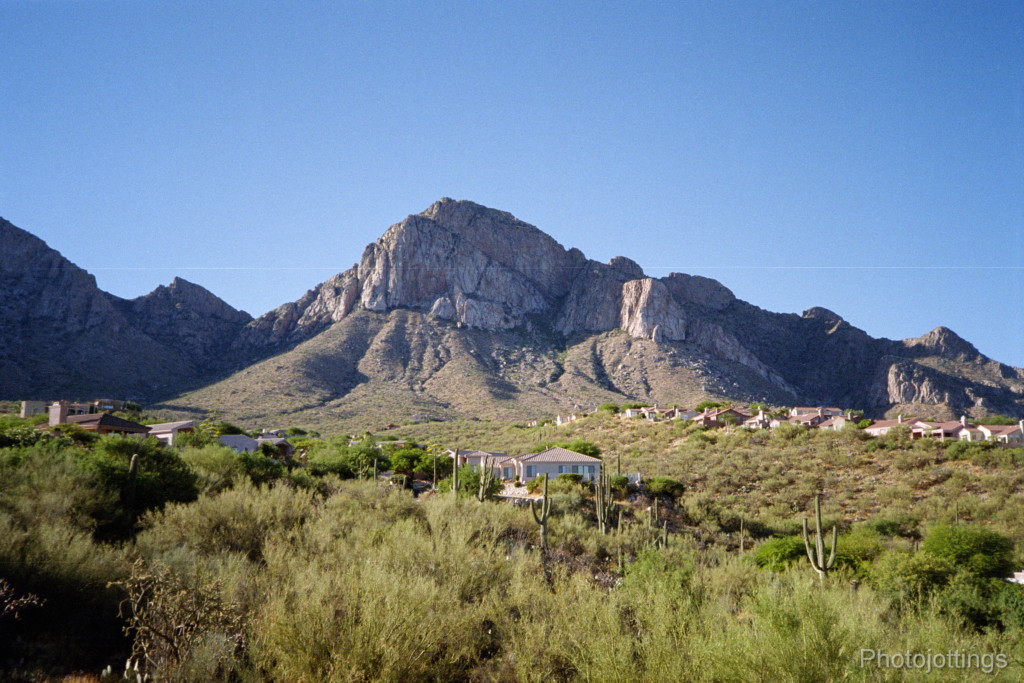
Our standard mountain test scene in the morning; long focus distance. Sharp in the centers and a little soft towards the sides.
Conclusion.
The Ricoh XF-30 turned in a good review, but when I bought it I thought I’d be able to change the aperture settings using the ISO selector like on the Canon Snappy 30, Kodak Breeze or similar Ricoh YF-20. So as it turns out, I’ve ended up with a cheap automatic camera with zone focusing and that’s all. Oh well, it’s a good camera, quite small and lightweight, but there are other similar cameras (like the Ricoh FF-90) with autofocus and much better lenses, and you don’t have to remember to choose your focus setting.
It was swell taking a trip back to the mid 1980s, but this camera is lost somewhere between a good automatic camera, and a fixed focus simple model, and it’s just not for me, so it’s one and done for the Ricoh XF-30, thanks for stopping by!
Check prices and availability on Ebay, Ricoh XF-30.
Please consider buying your goodies through my links, doing so helps support the site, thanks!